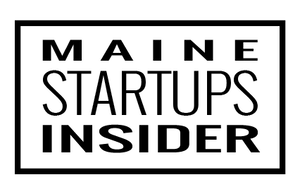
Rapport, the Portland-based startup that developed software to help businesses track their sustainability efforts, has shut down operations. John Rooks, the company’s co-founder and CEO, said the product wasn’t able to gain the necessary traction in the marketplace.
The company gained prominence in the Portland startup community in October 2015 when it won a $100,000 investment during a pitch competition judged by Steve Case, the AOL co-founder turned venture capitalist who had brought his Rise of the Rest tour through Portland. Rise of the Rest is Case’s effort to highlight startup communities around the country outside the major hubs of San Francisco, New York City, and Boston. Rapport also won the Top Gun showcase event that year.
Rapport was an enterprise software company that offered a cloud-based software platform to help companies and organizations better track a variety of sustainability metrics, from the amount of water and electricity used to the total number of miles their employees commuted to work. The company grew out of Rooks’ career as a sustainability consultant. He saw the opportunity for a software tool to productize some of the work he was having to do as an individual consultant, such as helping companies set up systems to measure and then reduce their greenhouse gas emissions. He and Justin Jaffe co-founded the company in 2014.
Following its win at Rise of the Rest, the company raised a roughly $250,000 seed round, including the $100,000 from Case’s Rise of the Rest Fund, which matched a development loan from the Maine Technology Institute. At its peak, it had four employees and customers from California to Maine, including the City of Portland. Jaffe told Maine Startups Inside in May 2017 that the software was deployed at roughly 200 sites.
Rooks spoke to Maine Startups Insider about what happened, why shutting down the company was the right move, and what he learned from the experience.
understand the product-development cycle
The bottom line, Rooks said, is that the company’s software platform never gained enough traction in the marketplace.
When reflecting on why that was, Rooks cited two reasons:
- They didn’t do enough market research to ensure product-market fit
- Software didn’t keep up with customer needs
“We didn’t do enough product discovery to make sure the product fit the market,” Rooks said. “We were relying on my experience as a consultant and what I was seeing as gaps in the marketplace and what my customers were telling me.”
That’s not to say the company didn’t do any market research. Rooks said they probably did more than 100 interviews with potential customers. The problems began when they asked these potential customers if they’d buy the product if they built it. The answers were encouraging. But that didn’t translate into actual sales after they built the product.
“Until you ask them to write a check, they’ll say they’ll buy it,” Rooks said, exposing a problem with asking that type of question during market research.
If he had to do it over again, he’d try to flip the traditional sales and product development cycle on its head and sell the product before actually building it. That’s hard to do, but it can be done. Rooks cites another local entrepreneur, Jason Cianchette, who was able to do that with his startup Liquid Wireless.
“That’s the right order of operations,” Rooks said.
The ‘Cool’ factor
The company also had to deal with the “cool” factor, Rooks said.
“People got excited when they could see their footprint, but it was just cool. It wasn’t anything beyond cool,” Rooks said. “So the second year, when the time came for them to renew, they didn’t want to pay for cool.”
The problem was, while the software did an excellent job of measuring these sustainability metrics and giving a business a snapshot of its carbon footprint, it didn’t provide the next actionable steps that customers were looking for.
“They wanted solutions,” Rooks said.
The product development timeline included future versions that would analyze the data it had collected and provide suggestions for ways the customer could reduce its carbon footprint, but the cash flow wasn’t there to get that future version built fast enough.
“We had this whole IOT play six years down the road where we were just sucking up data from all the machines, but we just never got there,” Rooks said.
For a while, to make up for the product’s lack of suggested actions, Rapport began layering consulting on top of the platform, which was ironic since that is what Rooks had been trying to avoid when he created the company. But it eventually became clear that it was not a sustainable plan.
Tired of raising capital
Typically, if a startup is building a software product, but the initial revenue isn’t enough to fund the development needed to continually improve the product to grab and retain market share and meet customers’ needs, then that startup is considered a good candidate to raise venture capital.
In the case of Rapport, Rooks and Jaffe were good at pitching the business, but they made the matter-of-fact decision they didn’t want to do any more fundraising.
“I just wanted to do the work and I got tired of selling the idea to people who’s job it was to find a reason to say no,” Rooks said. “The power dynamic of begging for money sucks. After three years of running the company, you start to ask, ‘Where do I want to spend my time?'”
In Rooks case, he wanted to spend his time helping businesses reduce their carbon footprint.
“I could get the thrill of getting people to reduce their carbon footprint without the software, so it took the headache away,” he said.
Find a naysayer
Asked what advice he’d give to startup founders, Rooks said find someone who’s willing to tell you what you don’t want to hear.
“I think you need a naysayer,” Rooks said. “I think you always need someone gut checking you because at the early stage when you’re spending most of your time telling the same story over and over to investors, you’re making it look as lucrative and bulletproof as possible—and it’s probably not yet. You’re selling the possibility. So you have to be very careful not to believe that story you tell outsiders.
“The hockey stick is a myth. You are telling a story that in year three the curve goes straight up—and you start to believe that and there’s a real danger to that. You can’t lie and so you do it with enthusiasm and sound projections, but there are real assumptions in there,” Rooks said. “If we had an advisor always gut checking our own bullshit that might have been helpful for us.”
In the end, you could say Rapport was a victim of its own success. It was successful enough that they kept going, but not successful enough that they ever saw that hockey-stick-type of growth.
“We were just successful enough to give us hope that the next piece would fall into line, by sheer grit and sticking it out and not wanting to fail,” Rooks said. “I think that’s a real problem—people hang on longer than they need. We didn’t want to own a barely successful company. That was work we weren’t willing to put in.”




Sorry to hear that Rapport didnt survive. I appreciate the founders reflection and unvarnished truth about fundraising and other lessons learned. If you are a startup founder take note, you can either chase funding or spend that time focusing on how well you product or service solves a problem for your clients. It’s extremely hard to do both well.